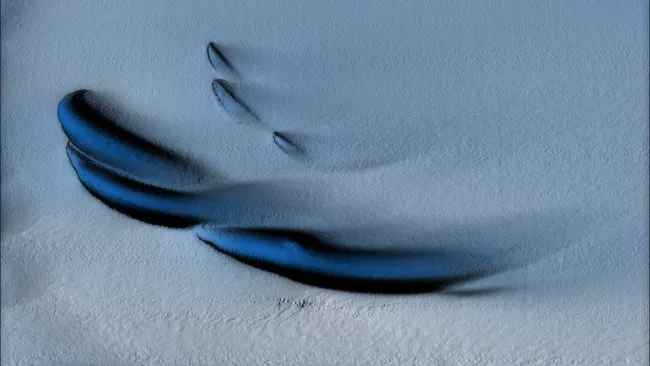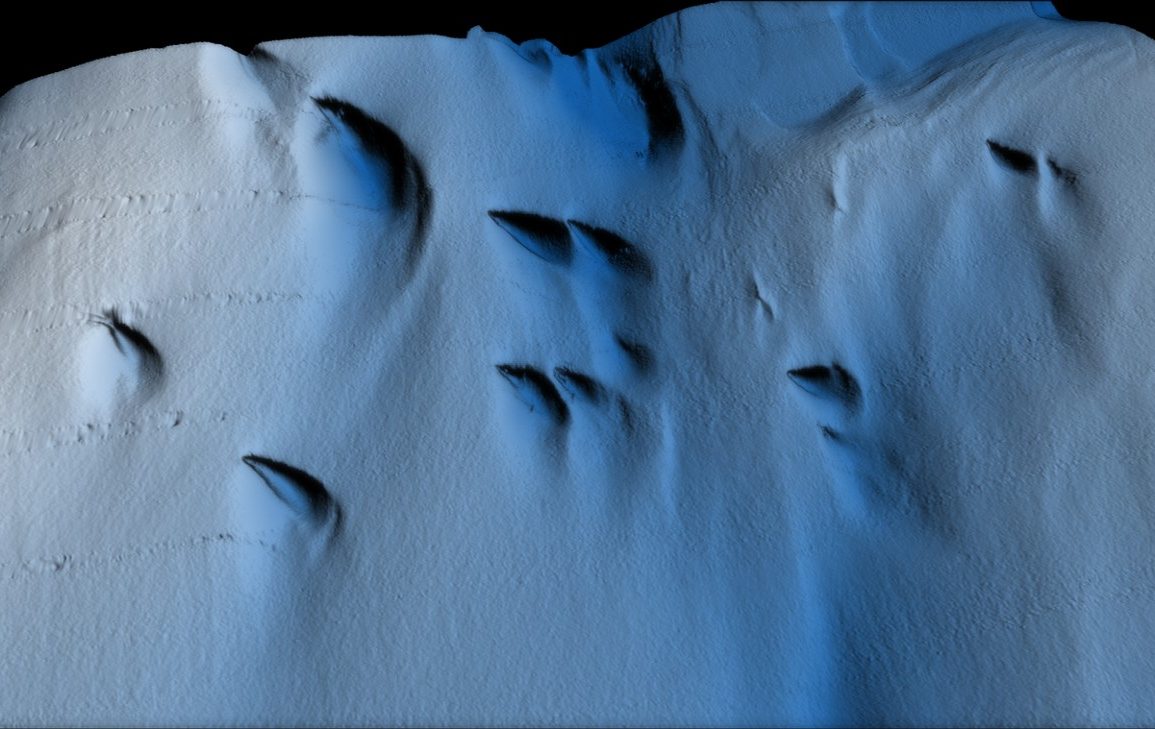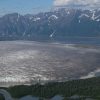Scientists have recently uncovered unprecedented patterns beneath the Dotson Ice Shelf in West Antarctica, thanks to a detailed survey conducted by a remotely operated vehicle (ROV) in 2022. This ROV ventured 10 miles under the glacier, traveling over 600 miles along its underside, revealing strange teardrop shapes that had never been observed before.
These findings were published on July 31 in the journal Science Advances, providing new insights into the complex melting processes of Antarctic ice shelves.
The study aimed to enhance understanding of the ice cycle in Antarctica, particularly how ice melts from beneath the continent and enters the ocean. This process is as critical as ice calving in transferring land ice to the ocean, according to lead author Anna Wåhlin from the University of Gothenburg.
Dotson Ice Shelf, a massive 30-mile-wide chunk of ice, is a significant part of the West Antarctic ice sheet. This ice sheet has glaciers that, if they collapse, could raise global sea levels by about 11 feet.

Previous studies have shown that warm ocean water is gradually eroding the ice shelf’s underside, unpinning it from the land and making its collapse inevitable.
To further investigate, researchers deployed the ROV to scan the glacier’s underside with sonar, producing the most comprehensive picture of the glacier’s base to date. They found that melting occurs fastest where underwater currents erode the ice base, with fractures aiding the melt to reach the surface.
Unexpectedly, the survey also revealed that the glacier’s underside is not smooth but dotted with teardrop shapes, some up to 1,300 feet long. These patterns are likely formed by uneven melting caused by water moving under the influence of the Earth’s rotation, resulting in asymmetrical shapes resembling blue mussels.
This phenomenon is attributed to the Coriolis force, which affects water movement in the Southern Hemisphere, creating a spiral flow pattern known as an Ekman spiral.
Despite losing the ROV during a follow-up mission in January 2024, the researchers plan to continue exploring the uncharted depths beneath the ice shelf with a new submersible. The findings emphasize the importance of Antarctic ice as a temperature stabilizer in Earth’s climate system.
Understanding the melting processes and the limits of ice sheet stability is crucial for predicting future sea level rise and its potential impacts on the global climate.

